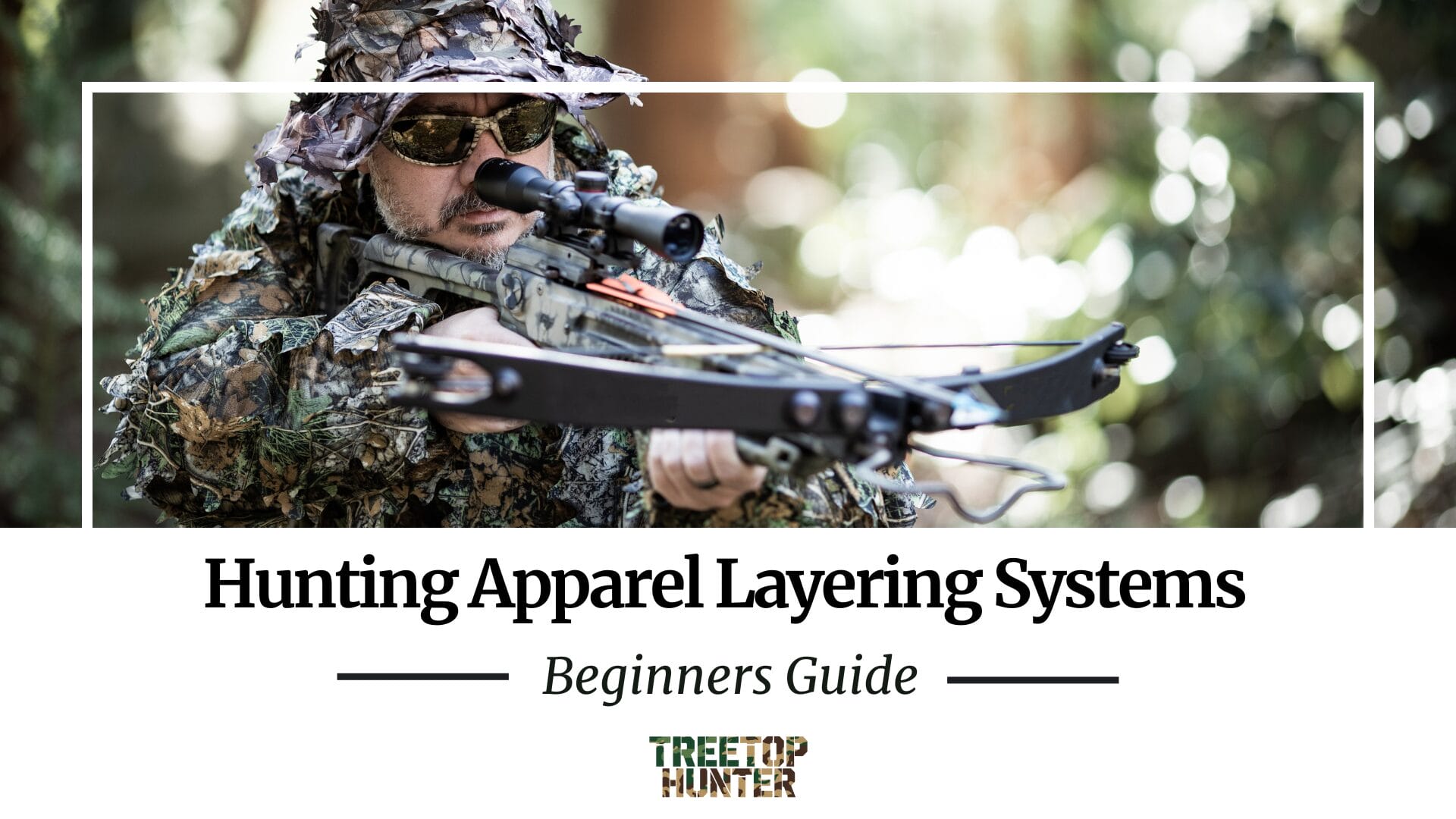The Complete Guide to Hunting Apparel Layering Systems
Hunting apparel layering systems aren’t just about throwing on clothes. They’re a strategic armor, designed to keep you comfortable and efficient no matter what the weather throws at you. At the core lies a simple, yet powerful concept: the three-layer system.
- Base layer: manages moisture by wicking sweat away from your skin.
- Mid layer: traps body heat while allowing moisture to escape.
- Outer layer: shields you from wind, rain, and snow with waterproof, breathable fabrics.
This trifecta forms the foundation of every successful hunting clothing setup. When each layer works in harmony, you stay dry, warm, and agile—ready to outsmart your prey instead of battling your gear. Layered hunting gear isn’t just clothing; it’s your edge in the field.
1. Base Layer: The Foundation of Moisture Management
The base layer is your first line of defense against discomfort in the field. Its main job is moisture management—wicking sweat away from your skin to keep you dry and regulate temperature whether you’re pushing hard or sitting still. Ideal base layers are:
- Lightweight to avoid bulk and allow freedom of movement
- Moisture-wicking to pull sweat off your skin quickly
- Quick-drying to prevent chilling when activity slows
Cotton has no place here—it holds moisture and chills the body, a recipe for misery when the temperature drops.
Choosing Between Merino Wool and Polyester-Based Synthetics
Two dominant base layer materials stand out: merino wool and polyester-based synthetics.
| Feature | Merino Wool | Synthetic (Polyester) |
| Moisture Wicking | Excellent | Excellent |
| Drying Speed | Slower | Faster |
| Warmth | Naturally insulating | Varies, often less insulating |
| Odor Resistance | Naturally resists odors | Can retain odors |
| Cost | Higher price point | Generally more affordable |
Merino wool offers natural temperature regulation, breathability, and odor control but takes longer to dry and usually comes at a premium cost. Synthetic fibers dry fast, handle heavy perspiration better during intense activity, and tend to be easier on the wallet.
Think about your hunting style and climate when choosing: long sits in cold weather might favor merino’s warmth and odor resistance. High-output hunts with lots of movement might lean toward synthetic for quick drying.
The Importance of a Solid Base Layer Setup
A solid base layer setup includes tops, bottoms, and briefs all designed to keep moisture off your skin so every layer above can work effectively.
2. Mid Layer: Insulation and Breathability for Active Movement
The mid layer insulation plays a critical role in your hunting apparel system by trapping body heat without shutting down moisture escape. This balance is essential during high-intensity activities like tracking, climbing, or glassing. Your mid layer should keep you warm without turning into a sauna.
Key features of effective mid layers:
- Heat retention: Locks in warmth generated by your body.
- Breathability: Allows sweat and moisture to escape to prevent dampness.
- Lightweight comfort: Moves with you, never restricting.
Mid Layer Options for Different Conditions
Lightweight microfleece hoodies
Designed for hunters who stay active and generate plenty of body heat. Microfleece offers excellent breathability and wicks moisture efficiently while providing just enough warmth. Ideal when you’re hustling through the woods on a whitetail stalk or chasing elk up a ridge.
Heavier fleece jackets or synthetic insulators
When temperatures drop and movement slows, these thicker layers trap more heat. Synthetic insulators mimic down but handle moisture better, making them perfect for cold, damp environments where staying dry can mean survival.
Some hunters prefer layering multiple mid layers for versatility—starting with a lightweight fleece during active moments and adding a synthetic puffy jacket when pausing or waiting in treestands. This strategy adapts your insulation to fluctuating activity levels and weather.
The right mid layer keeps you warm without overheating—your secret weapon to outlasting the elements while staying agile.
3. Outer Layer: Weather Protection with Breathability
The outer shell jacket is your first line of defense against the elements. Its job goes beyond just keeping you dry; it has to breathe while standing up to relentless rain, biting wind, and snow. Without the right outer layer, all the warmth generated underneath can quickly vanish.
Key features to look for in an outer shell jacket:
- Waterproofness: The fabric must repel water under heavy downpours without saturating.
- Breathability: Moisture generated by your body during strenuous hunts needs an escape route to prevent overheating and clamminess.
- Durability: Hunting terrain demands tough materials that resist abrasions, tears, and snags.
A stiff outer fabric combined with a high-quality membrane like Gore-Tex nails this balance. Gore-Tex membranes provide a reliable waterproof barrier while allowing sweat vapor to escape. This means your layers stay dry and comfortable no matter how intense the action gets.
Unlike flimsy rain shells, these rugged jackets last season after season. They shield you from convective cooling caused by wind without layering on unnecessary bulk. When paired correctly within your Hunting Apparel Layering Systems, this shell becomes the hard-working armor that lets you focus on the hunt—not the weather.
Soft shell pants and active insulation layers beneath work in concert with this outer shell to create a system built for versatility across shifting conditions.
4. Specialized Hunting Pants: Soft Shell Advantages and Features
Soft shell hunting pants strike a powerful balance between flexibility and rugged protection. These pants are crafted from durable polyester or nylon blends that stand up to the everyday battles of the field — think thorny bushes, rough branches, and unpredictable terrain. Unlike stiff hard shells, soft shells move with you, offering freedom for stalking, climbing, or quick dashes.
Key benefits include:
- Flexibility & Stretch: Enables agile movement without feeling restricted. Essential for active hunts demanding stealth and speed.
- Durability: Reinforced fabrics resist tears and abrasions from brush or rocky ground.
- Water Resistance & Quick Drying: Not fully waterproof but sheds light moisture effectively, keeping discomfort at bay during unexpected weather shifts.
- Breathability: Helps regulate temperature when exertion heats you up.
Functional features tailor these pants to real-world hunting challenges:
- Knee Pads — Provide extra protection and comfort during crawling or kneeling in rough terrain.
- Hip Vents — Allow airflow to cool down during high-intensity moments without removing layers.
- Camouflage Patterns — Blend seamlessly into various environments while solid colors offer versatility.
Soft shell hunting pants fit perfectly into a layered system that demands durability without sacrificing mobility. They serve as a resilient base for more insulated or protective layers depending on weather and activity level. This gear is not just about surviving the elements; it’s about thriving in them with confidence and control.
5. Insulation Layers Explained: Active vs Static Insulation
Insulation layers are your heat strategy in the field. Knowing when to use active insulation versus static insulation can make or break your comfort and safety.
Active Insulation
Active insulation is built for movement. Think breathable fleece or hybrid garments designed to trap warmth without shutting down moisture escape during high-output activities like tracking or climbing. These layers breathe, wick, and regulate heat so you don’t overheat while pushing hard.
Here are some examples of active insulation:
- Lightweight microfleece hoodies
- Hybrid synthetic fleeces with wind resistance
- Materials that shed light rain or snow
Active insulation keeps you comfortable on the go, allowing sweat to exit while holding enough warmth as your body works.
Static Insulation
Static insulation targets those moments when you’re sitting still—staking out a stand or resting between stalks. Puffy jackets and pants filled with down or synthetic fibers trap body heat in pockets of air, providing serious warmth without active breathability.
Here are some examples of static insulation:
- Puffy jackets as a top layer
- Synthetic or down fill depending on weather and personal preference
- Essential for survival situations where hypothermia risk spikes
Static layers act like a portable heat shield, preventing cold from creeping in when your body slows down.
Knowing how to combine these two types of insulation ensures readiness for every phase of the hunt—from sprinting after game to freezing in place during the wait. Active insulation goes under wind-blocking layers; static insulation tops it off when the temperature drops and the action pauses.
The Complete Eight-Piece Hunting Clothing System
Mastering the eight-piece clothing system puts you in control of every weather challenge and activity level you face. This setup covers all the essentials from moisture management to serious cold-weather defense:
- Base Layers: Top, bottom, and briefs designed to wick sweat and regulate temperature.
- Soft Shell Pants: Durable, quick-drying protection with features like knee pads and vents for active terrain.
- Active Insulation Piece: Think ambient hoodies or midweight fleeces that breathe when you’re on the move.
- Wind Stopper Layer: Lightweight mountain jackets that block wind and convective heat loss without bulk.
- Rain Gear/Hard Shell Jacket & Pants: Waterproof armor against heavy rain or snow, stashed for the worst conditions.
- Static Insulated Puffy Jacket & Pants: Essential for trapping heat during long sits or cold breaks.
This lineup gives hunters a toolkit that adapts seamlessly—layer up or peel off—to push through any hunt with confidence.
Practical Considerations When Choosing Hunting Apparel Layers
Personalizing your gear choices turns a standard clothing system into your own hunting armor. When selecting materials, it’s important to understand the differences between synthetic and wool:
- Synthetic fibers dry quickly, cost less, and perform well in high-output hunts where managing moisture is crucial.
- Merino wool provides natural warmth and odor resistance but takes longer to dry and requires a higher investment.
Your activity level will determine your layering needs. For high-intensity activities like tracking or climbing, you’ll need breathable, lightweight mid-layers such as microfleece hoodies to prevent overheating. On the other hand, for slower-paced or cold-weather hunts, heavier fleece or insulated puffy jackets will help retain heat when you’re not moving as much.
The environmental conditions you hunt in will also influence your choices. If you’re expecting wet weather, make sure to have reliable waterproof and breathable outer shells. In windy areas, wind stopper layers can help block convective cooling without the bulk of rain gear.
Remember, a hunting apparel system that fits like a second skin isn’t about following strict rules—it’s about customizing each layer to suit your movements, hunting locations, and personal preferences.
Conclusion
Optimizing your hunting apparel goes beyond just choosing the right clothes—it’s about creating a system that suits your specific hunting style and the weather challenges you encounter. Invest in high-quality layers designed to manage moisture, provide insulation, and protect against the elements. Select gear that allows for easy movement, ensures comfort, and helps you stay focused in any condition.
Ask yourself:
- What environments will test my gear?
- How active will I be on the hunt?
- Which materials match my preferences and needs?
By mastering your Hunting Apparel Layering Systems, you take control of your experience—being prepared, confident, and ready for anything nature throws your way.


